Direct Methanol Fuel Cell Market Outlook:
Direct Methanol Fuel Cell Market size was valued at USD 336.72 million in 2025 and is likely to cross USD 1.4 billion by 2035, expanding at more than 15.3% CAGR during the forecast period i.e., between 2026-2035. In the year 2026, the industry size of direct methanol fuel cell is assessed at USD 383.09 million.
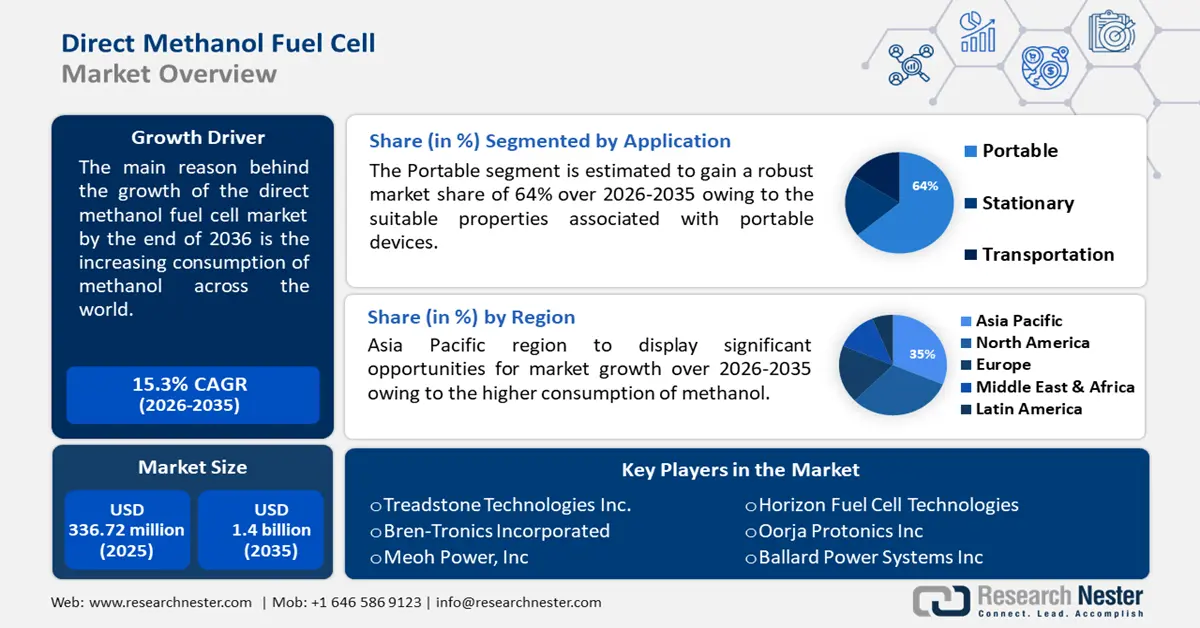
The reason behind the growth is the increasing adoption of renewable energy sources across the globe.
Nowadays, about one-seventh of the primary energy produced worldwide comes from renewable sources, and by 2030, affordable electricity from renewable sources may account for around 64% of the global electrical supply. For instance, through 2026, more than 90% of the expansion in the world's electricity capacity is expected to come from renewable sources.
The usage of methanol as fuel has grown dramatically over the past few years since it has a lot to offer as an environmentally friendly fuel source, including being a cleaner fuel for automobiles with increased thermal efficiency and reduced emissions. For instance, by 2025, the world's methanol consumption is set to reach over 120 million tons.
Key Direct Methanol Fuel Cell Market Insights Summary:
Regional Highlights:
- Asia Pacific direct methanol fuel cell market will hold more than 35% share by 2035, attributed to the growing production of methanol in China, which is being explored for its potential to assist the country in meeting its carbon neutrality targets.
- North America market will register significant CAGR during 2026-2035, attributed to the increasing strain on electrical infrastructure due to climate change and the resulting demand for alternative energy solutions like direct methanol fuel cells.
Segment Insights:
- The portable segment in the direct methanol fuel cell market is expected to achieve a 64% share by 2035, driven by the suitability of direct methanol fuel cells for portable devices.
Key Growth Trends:
- Growing demand for electricity
- Presence of alternate fuel cell systems
Major Challenges:
- Presence of alternate fuel cell systems
- Exorbitant cost of direct methanol fuel cells and high operating expenditures may obstruct its integration
Key Players: Ballard Power Systems Inc., Oorja Protonics Inc., Horizon Fuel Cell Technologies, Meoh Power, Inc., Bren-Tronics Incorporated, Treadstone Technologies Inc., Viaspace Inc., E. I. Du Pont De Nemours and Company, Ird Fuel Cell A/S, Johnson Matthey, Antig Technology Co. Ltd., DuPont Fuel Cell, Polyfuel Inc, Blue World Technologies.
Global Direct Methanol Fuel Cell Market Forecast and Regional Outlook:
Market Size & Growth Projections:
- 2025 Market Size: USD 336.72 million
- 2026 Market Size: USD 383.09 million
- Projected Market Size: USD 1.4 billion by 2035
- Growth Forecasts: 15.3% CAGR (2026-2035)
Key Regional Dynamics:
- Largest Region: Asia Pacific (35% Share by 2035)
- Fastest Growing Region: Asia Pacific
- Dominating Countries: United States, Japan, Germany, China, South Korea
- Emerging Countries: China, Japan, South Korea, India, Malaysia
Last updated on : 16 September, 2025
Direct Methanol Fuel Cell Market Growth Drivers and Challenges:
Growth Drivers
- Growing demand for electricity - The most popular type of methanol fuel cell, which is based on the liquid fuel direct metal fuel cell technology is a power generator that produces electricity by directly converting the chemical energy of methanol and water. It is anticipated that the capacity of the world's electrical power plants will rise by over 60% by 2050.
- Increasing demand for consumer electronics - The increasing need for portable power sources in medical equipment, consumer electronics, and military technology has increased the demand for direct methanol fuel cells.
- Presence of alternate fuel cell systems - There are other cost-effective fuel cell systems present in the direct methanol fuel cell market such as solid oxide fuel cells are a class of fuel cells distinguished by the use of a solid oxide material as the electrolyte and are highly efficient electrochemical devices that produce electricity, water, heat, and small amounts of carbon dioxide after converting hydrogen and carbon monoxide from hydrocarbon fuels.
Challenges
- Presence of alternate fuel cell systems - There are other cost-effective fuel cell systems present in the direct methanol fuel cell market such as solid oxide fuel cells are a class of fuel cells distinguished by the use of a solid oxide material as the electrolyte and are highly efficient electrochemical devices that produce electricity, water, heat, and small amounts of carbon dioxide after converting hydrogen and carbon monoxide from hydrocarbon fuels.
Besides this, the proton exchange membrane fuel cell has electrodes made of platinum and an electrolyte made of an acidic polymer membrane based on water and is considered one of the most promising electrochemical-generating systems for clean and efficient power generation in the twenty-first century. Moreover, alkaline fuel cells were among the first fuel cell types to be thoroughly studied, and NASA has been using them in the Apollo and space shuttle missions since the mid-1960s as they possess the benefit of being less susceptible to fuel contaminants. - Exorbitant cost of direct methanol fuel cells and high operating expenditures may obstruct its integration
- Lack of standardization in the production of direct methanol fuel cells is estimated to hinder the direct methanol fuel cell market expansion in the projection timeframe
Direct Methanol Fuel Cell Market Size and Forecast:
| Report Attribute | Details |
|---|---|
|
Base Year |
2025 |
|
Forecast Period |
2026-2035 |
|
CAGR |
15.3% |
|
Base Year Market Size (2025) |
USD 336.72 million |
|
Forecast Year Market Size (2035) |
USD 1.4 billion |
|
Regional Scope |
|
Direct Methanol Fuel Cell Market Segmentation:
Application
In direct methanol fuel cell market, portable segment is poised to dominate over 64% share by 2035. Owing to its suitable properties for portable devices, the direct methanol fuel cell is currently the main focus of fuel cell development for portable applications to be used as power sources for portable devices such as laptops and mobile phones.
Currently, a system for portable applications is being developed using direct methanol fuel cell technology to supply the necessary electricity for portable devices such as laptops, eliminating the need to plug the device into the electrical grid to recharge.
Component
In terms of component segmentation, the bipolar plates segment in the direct methanol fuel cell market is expected to grow significantly till 2035. Typically, a DMFC is made up of bipolar plates, which are used to enhance compressive strength, and are offered to encourage fuel supply, enhance fuel dispersibility, expand the reaction area between fuel and the catalytic layer, and ultimately enhance fuel cell performance.
Moreover, the anode and cathode flow fields on the bipolar plates are grooved, and they play a crucial role in the stability & performance of the cell stack.
Our in-depth analysis of the global direct methanol fuel cell market includes the following segments:
|
Component |
|
|
Application |
|
|
Type |
|

Vishnu Nair
Head - Global Business DevelopmentCustomize this report to your requirements — connect with our consultant for personalized insights and options.
Direct Methanol Fuel Cell Market Regional Analysis:
APAC Market Insights
Asia Pacific industry is likely to dominate majority revenue share of 35% by 2035. This growth can be impelled by the growing production of methanol, as its fuel has been explored and tested in China for the past ten years to assist the country in meeting its carbon-neutrality target more quickly and transform the automotive sector.
In China, the majority of China's methanol comes from its farms, with the remaining supplies coming from natural gas and cooking gas. For instance, China is currently the world leader in the production and use of methanol, accounting for more than 55% of the global supply.
North American Market Insights
North America region is likely to observe significant growth till 2035. The frequency, duration, and intensity of extreme weather events are increasing as a result of climate change, placing further strain on the nation's aging overburdened electrical infrastructure. This has led to over 75% more weather-related power disruptions on average annually in the United States.
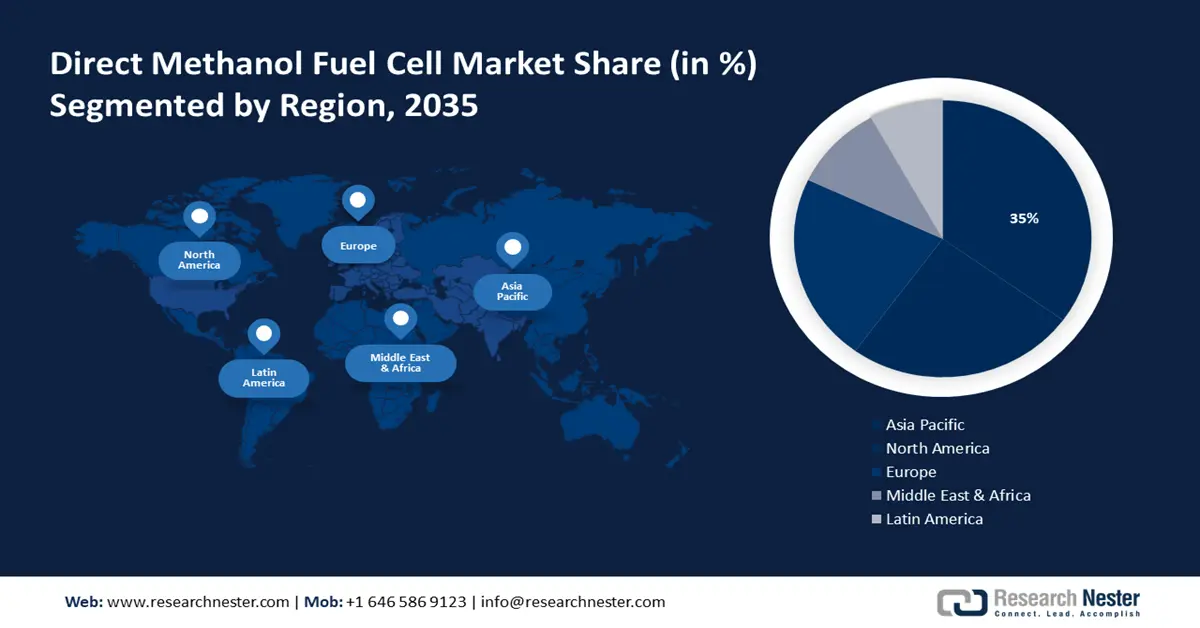
Direct Methanol Fuel Cell Market Players:
- SFC Energy AG
- Company Overview
- Business Strategy
- Key Product Offerings
- Financial Performance
- Key Performance Indicators
- Risk Analysis
- Recent Development
- Regional Presence
- SWOT Analysis
- Ballard Power Systems Inc.
- Oorja Protonics Inc.
- Horizon Fuel Cell Technologies
- Meoh Power, Inc.
- Bren-Tronics Incorporated
- Treadstone Technologies Inc.
- Viaspace Inc.
- E. I. Du Pont De Nemours and Company
- Ird Fuel Cell A/S
- Johnson Matthey
- Antig Technology Co. Ltd.
- DuPont Fuel Cell
- Polyfuel Inc
- Blue World Technologies
Recent Developments
- SFC Energy AG announced a partnership with Toyota Tsusho to extend direct methanol fuel cells and SFC hydrogen exclusive sales to Thailand, the Philippines, and Vietnam, and further develop the markets in China and Southeast Asia, with a target sales volume of more than EUR 90 million by 2025.
- Ballard Power Systems Inc. partnered with NFI Group Inc. to concentrate on fuel cell-powered bus deployment levels for all of NFI's main brands to accelerate the shift to zero-emission transportation in response to the rising demand for fuel cell buses.
- Report ID: 5681
- Published Date: Sep 16, 2025
- Report Format: PDF, PPT
- Get detailed insights on specific segments/region
- Inquire about report customization for your industry
- Learn about our special pricing for startups
- Request a demo of the report’s key findings
- Understand the report’s forecasting methodology
- Inquire about post-purchase support and updates
- Ask About Company-Level Intelligence Additions
Have specific data needs or budget constraints?
Frequently Asked Questions (FAQ)
Direct Methanol Fuel Cell Market Report Scope
FREE Sample Copy includes market overview, growth trends, statistical charts & tables, forecast estimates, and much more.
Connect with our Expert
See how top U.S. companies are managing market uncertainty — get your free sample with trends, challenges, macroeconomic factors, charts, forecasts, and more.
Copyright @ 2025 Research Nester. All Rights Reserved.

 Inquiry Before Buying
Inquiry Before Buying
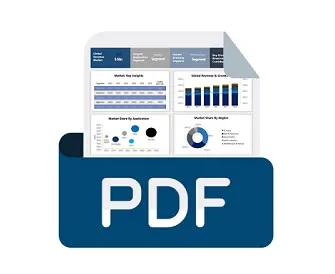

 Afghanistan (+93)
Afghanistan (+93)
 Åland Islands (+358)
Åland Islands (+358)
 Albania (+355)
Albania (+355)
 Algeria (+213)
Algeria (+213)
 American Samoa (+1684)
American Samoa (+1684)
 Andorra (+376)
Andorra (+376)
 Angola (+244)
Angola (+244)
 Anguilla (+1264)
Anguilla (+1264)
 Antarctica (+672)
Antarctica (+672)
 Antigua and Barbuda (+1268)
Antigua and Barbuda (+1268)
 Argentina (+54)
Argentina (+54)
 Armenia (+374)
Armenia (+374)
 Aruba (+297)
Aruba (+297)
 Australia (+61)
Australia (+61)
 Austria (+43)
Austria (+43)
 Azerbaijan (+994)
Azerbaijan (+994)
 Bahamas (+1242)
Bahamas (+1242)
 Bahrain (+973)
Bahrain (+973)
 Bangladesh (+880)
Bangladesh (+880)
 Barbados (+1246)
Barbados (+1246)
 Belarus (+375)
Belarus (+375)
 Belgium (+32)
Belgium (+32)
 Belize (+501)
Belize (+501)
 Benin (+229)
Benin (+229)
 Bermuda (+1441)
Bermuda (+1441)
 Bhutan (+975)
Bhutan (+975)
 Bolivia (+591)
Bolivia (+591)
 Bosnia and Herzegovina (+387)
Bosnia and Herzegovina (+387)
 Botswana (+267)
Botswana (+267)
 Bouvet Island (+)
Bouvet Island (+)
 Brazil (+55)
Brazil (+55)
 British Indian Ocean Territory (+246)
British Indian Ocean Territory (+246)
 British Virgin Islands (+1284)
British Virgin Islands (+1284)
 Brunei (+673)
Brunei (+673)
 Bulgaria (+359)
Bulgaria (+359)
 Burkina Faso (+226)
Burkina Faso (+226)
 Burundi (+257)
Burundi (+257)
 Cambodia (+855)
Cambodia (+855)
 Cameroon (+237)
Cameroon (+237)
 Canada (+1)
Canada (+1)
 Cape Verde (+238)
Cape Verde (+238)
 Cayman Islands (+1345)
Cayman Islands (+1345)
 Central African Republic (+236)
Central African Republic (+236)
 Chad (+235)
Chad (+235)
 Chile (+56)
Chile (+56)
 China (+86)
China (+86)
 Christmas Island (+61)
Christmas Island (+61)
 Cocos (Keeling) Islands (+61)
Cocos (Keeling) Islands (+61)
 Colombia (+57)
Colombia (+57)
 Comoros (+269)
Comoros (+269)
 Cook Islands (+682)
Cook Islands (+682)
 Costa Rica (+506)
Costa Rica (+506)
 Croatia (+385)
Croatia (+385)
 Cuba (+53)
Cuba (+53)
 Curaçao (+599)
Curaçao (+599)
 Cyprus (+357)
Cyprus (+357)
 Czechia (+420)
Czechia (+420)
 Democratic Republic of the Congo (+243)
Democratic Republic of the Congo (+243)
 Denmark (+45)
Denmark (+45)
 Djibouti (+253)
Djibouti (+253)
 Dominica (+1767)
Dominica (+1767)
 Dominican Republic (+1809)
Dominican Republic (+1809)
 Timor-Leste (+670)
Timor-Leste (+670)
 Ecuador (+593)
Ecuador (+593)
 Egypt (+20)
Egypt (+20)
 El Salvador (+503)
El Salvador (+503)
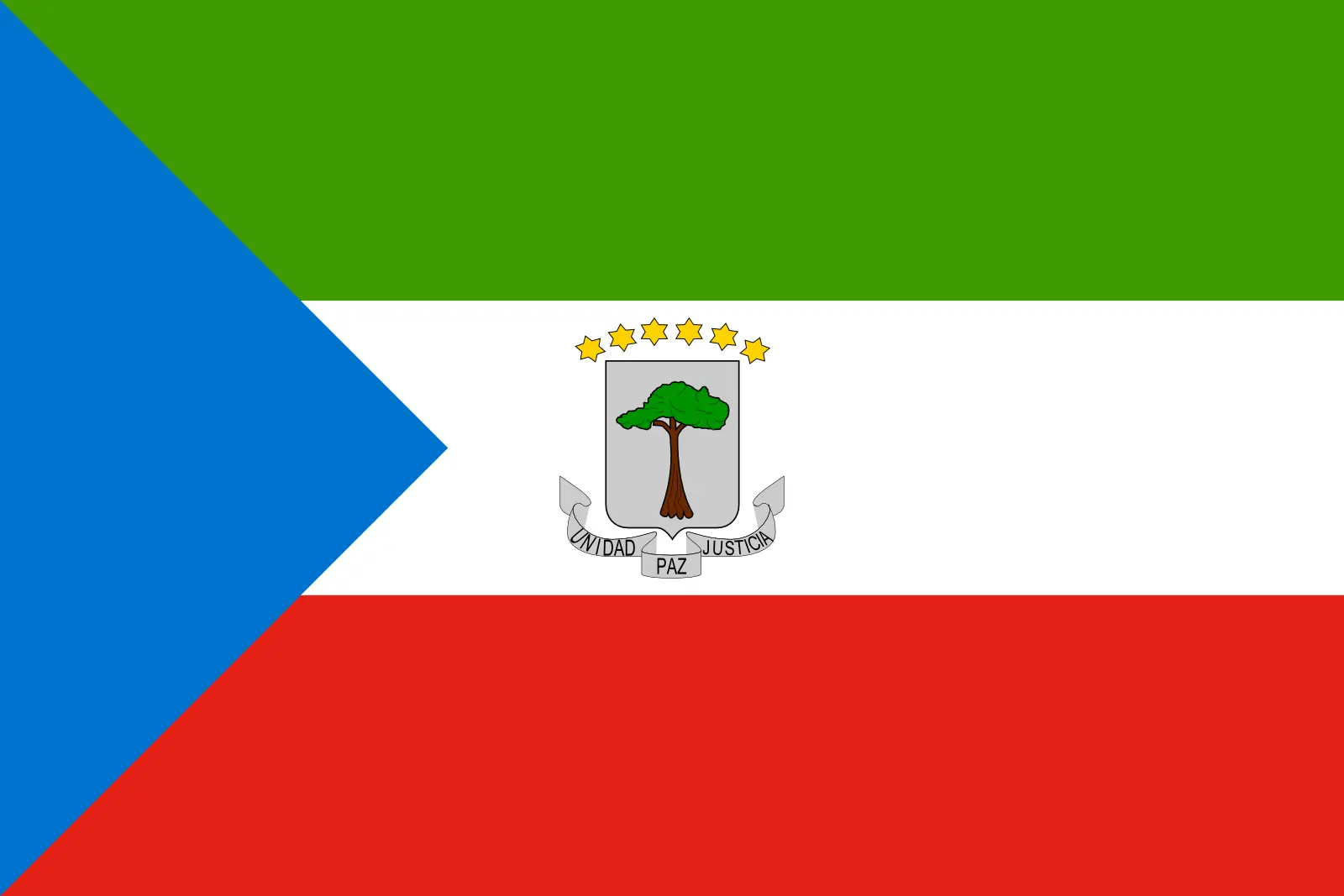 Equatorial Guinea (+240)
Equatorial Guinea (+240)
 Eritrea (+291)
Eritrea (+291)
 Estonia (+372)
Estonia (+372)
 Ethiopia (+251)
Ethiopia (+251)
 Falkland Islands (+500)
Falkland Islands (+500)
 Faroe Islands (+298)
Faroe Islands (+298)
 Fiji (+679)
Fiji (+679)
 Finland (+358)
Finland (+358)
 France (+33)
France (+33)
 Gabon (+241)
Gabon (+241)
 Gambia (+220)
Gambia (+220)
 Georgia (+995)
Georgia (+995)
 Germany (+49)
Germany (+49)
 Ghana (+233)
Ghana (+233)
 Gibraltar (+350)
Gibraltar (+350)
 Greece (+30)
Greece (+30)
 Greenland (+299)
Greenland (+299)
 Grenada (+1473)
Grenada (+1473)
 Guadeloupe (+590)
Guadeloupe (+590)
 Guam (+1671)
Guam (+1671)
 Guatemala (+502)
Guatemala (+502)
 Guinea (+224)
Guinea (+224)
 Guinea-Bissau (+245)
Guinea-Bissau (+245)
 Guyana (+592)
Guyana (+592)
 Haiti (+509)
Haiti (+509)
 Honduras (+504)
Honduras (+504)
 Hong Kong (+852)
Hong Kong (+852)
 Hungary (+36)
Hungary (+36)
 Iceland (+354)
Iceland (+354)
 India (+91)
India (+91)
 Indonesia (+62)
Indonesia (+62)
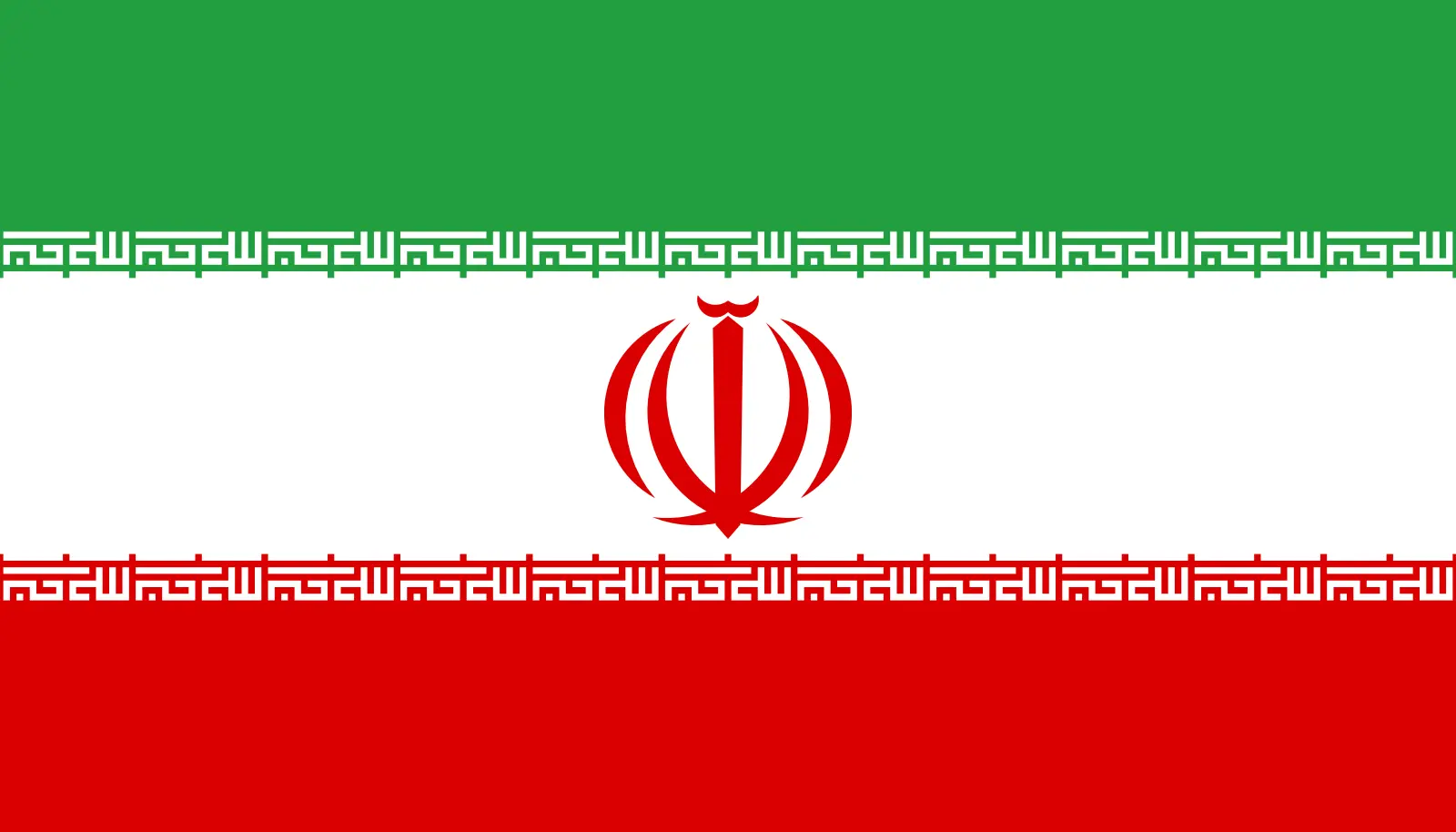 Iran (+98)
Iran (+98)
 Iraq (+964)
Iraq (+964)
 Ireland (+353)
Ireland (+353)
 Isle of Man (+44)
Isle of Man (+44)
 Israel (+972)
Israel (+972)
 Italy (+39)
Italy (+39)
 Jamaica (+1876)
Jamaica (+1876)
 Japan (+81)
Japan (+81)
 Jersey (+44)
Jersey (+44)
 Jordan (+962)
Jordan (+962)
 Kazakhstan (+7)
Kazakhstan (+7)
 Kenya (+254)
Kenya (+254)
 Kiribati (+686)
Kiribati (+686)
 Kuwait (+965)
Kuwait (+965)
 Kyrgyzstan (+996)
Kyrgyzstan (+996)
 Laos (+856)
Laos (+856)
 Latvia (+371)
Latvia (+371)
 Lebanon (+961)
Lebanon (+961)
 Lesotho (+266)
Lesotho (+266)
 Liberia (+231)
Liberia (+231)
 Libya (+218)
Libya (+218)
 Liechtenstein (+423)
Liechtenstein (+423)
 Lithuania (+370)
Lithuania (+370)
 Luxembourg (+352)
Luxembourg (+352)
 Macao (+853)
Macao (+853)
 Madagascar (+261)
Madagascar (+261)
 Malawi (+265)
Malawi (+265)
 Malaysia (+60)
Malaysia (+60)
 Maldives (+960)
Maldives (+960)
 Mali (+223)
Mali (+223)
 Malta (+356)
Malta (+356)
 Marshall Islands (+692)
Marshall Islands (+692)
 Mauritania (+222)
Mauritania (+222)
 Mauritius (+230)
Mauritius (+230)
 Mayotte (+262)
Mayotte (+262)
 Mexico (+52)
Mexico (+52)
 Micronesia (+691)
Micronesia (+691)
 Moldova (+373)
Moldova (+373)
 Monaco (+377)
Monaco (+377)
 Mongolia (+976)
Mongolia (+976)
 Montenegro (+382)
Montenegro (+382)
 Montserrat (+1664)
Montserrat (+1664)
 Morocco (+212)
Morocco (+212)
 Mozambique (+258)
Mozambique (+258)
 Myanmar (+95)
Myanmar (+95)
 Namibia (+264)
Namibia (+264)
 Nauru (+674)
Nauru (+674)
 Nepal (+977)
Nepal (+977)
 Netherlands (+31)
Netherlands (+31)
 New Caledonia (+687)
New Caledonia (+687)
 New Zealand (+64)
New Zealand (+64)
 Nicaragua (+505)
Nicaragua (+505)
 Niger (+227)
Niger (+227)
 Nigeria (+234)
Nigeria (+234)
 Niue (+683)
Niue (+683)
 Norfolk Island (+672)
Norfolk Island (+672)
 North Korea (+850)
North Korea (+850)
 Northern Mariana Islands (+1670)
Northern Mariana Islands (+1670)
 Norway (+47)
Norway (+47)
 Oman (+968)
Oman (+968)
 Pakistan (+92)
Pakistan (+92)
 Palau (+680)
Palau (+680)
 Palestine (+970)
Palestine (+970)
 Panama (+507)
Panama (+507)
 Papua New Guinea (+675)
Papua New Guinea (+675)
 Paraguay (+595)
Paraguay (+595)
 Peru (+51)
Peru (+51)
 Philippines (+63)
Philippines (+63)
 Poland (+48)
Poland (+48)
 Portugal (+351)
Portugal (+351)
 Puerto Rico (+1787)
Puerto Rico (+1787)
 Qatar (+974)
Qatar (+974)
 Romania (+40)
Romania (+40)
 Russia (+7)
Russia (+7)
 Rwanda (+250)
Rwanda (+250)
 Saint Barthélemy (+590)
Saint Barthélemy (+590)
 Saint Helena, Ascension and Tristan da Cunha (+290)
Saint Helena, Ascension and Tristan da Cunha (+290)
 Saint Kitts and Nevis (+1869)
Saint Kitts and Nevis (+1869)
 Saint Lucia (+1758)
Saint Lucia (+1758)
 Saint Martin (French part) (+590)
Saint Martin (French part) (+590)
 Saint Pierre and Miquelon (+508)
Saint Pierre and Miquelon (+508)
 Saint Vincent and the Grenadines (+1784)
Saint Vincent and the Grenadines (+1784)
 Samoa (+685)
Samoa (+685)
 San Marino (+378)
San Marino (+378)
 Sao Tome and Principe (+239)
Sao Tome and Principe (+239)
 Saudi Arabia (+966)
Saudi Arabia (+966)
 Senegal (+221)
Senegal (+221)
 Serbia (+381)
Serbia (+381)
 Seychelles (+248)
Seychelles (+248)
 Sierra Leone (+232)
Sierra Leone (+232)
 Singapore (+65)
Singapore (+65)
 Sint Maarten (Dutch part) (+1721)
Sint Maarten (Dutch part) (+1721)
 Slovakia (+421)
Slovakia (+421)
 Slovenia (+386)
Slovenia (+386)
 Solomon Islands (+677)
Solomon Islands (+677)
 Somalia (+252)
Somalia (+252)
 South Africa (+27)
South Africa (+27)
 South Georgia and the South Sandwich Islands (+0)
South Georgia and the South Sandwich Islands (+0)
 South Korea (+82)
South Korea (+82)
 South Sudan (+211)
South Sudan (+211)
 Spain (+34)
Spain (+34)
 Sri Lanka (+94)
Sri Lanka (+94)
 Sudan (+249)
Sudan (+249)
 Suriname (+597)
Suriname (+597)
 Svalbard and Jan Mayen (+47)
Svalbard and Jan Mayen (+47)
 Eswatini (+268)
Eswatini (+268)
 Sweden (+46)
Sweden (+46)
 Switzerland (+41)
Switzerland (+41)
 Syria (+963)
Syria (+963)
 Taiwan (+886)
Taiwan (+886)
 Tajikistan (+992)
Tajikistan (+992)
 Tanzania (+255)
Tanzania (+255)
 Thailand (+66)
Thailand (+66)
 Togo (+228)
Togo (+228)
 Tokelau (+690)
Tokelau (+690)
 Tonga (+676)
Tonga (+676)
 Trinidad and Tobago (+1868)
Trinidad and Tobago (+1868)
 Tunisia (+216)
Tunisia (+216)
 Turkey (+90)
Turkey (+90)
 Turkmenistan (+993)
Turkmenistan (+993)
 Turks and Caicos Islands (+1649)
Turks and Caicos Islands (+1649)
 Tuvalu (+688)
Tuvalu (+688)
 Uganda (+256)
Uganda (+256)
 Ukraine (+380)
Ukraine (+380)
 United Arab Emirates (+971)
United Arab Emirates (+971)
 United Kingdom (+44)
United Kingdom (+44)
 Uruguay (+598)
Uruguay (+598)
 Uzbekistan (+998)
Uzbekistan (+998)
 Vanuatu (+678)
Vanuatu (+678)
 Vatican City (+39)
Vatican City (+39)
 Venezuela (Bolivarian Republic of) (+58)
Venezuela (Bolivarian Republic of) (+58)
 Vietnam (+84)
Vietnam (+84)
 Wallis and Futuna (+681)
Wallis and Futuna (+681)
 Western Sahara (+212)
Western Sahara (+212)
 Yemen (+967)
Yemen (+967)
 Zambia (+260)
Zambia (+260)
 Zimbabwe (+263)
Zimbabwe (+263)
